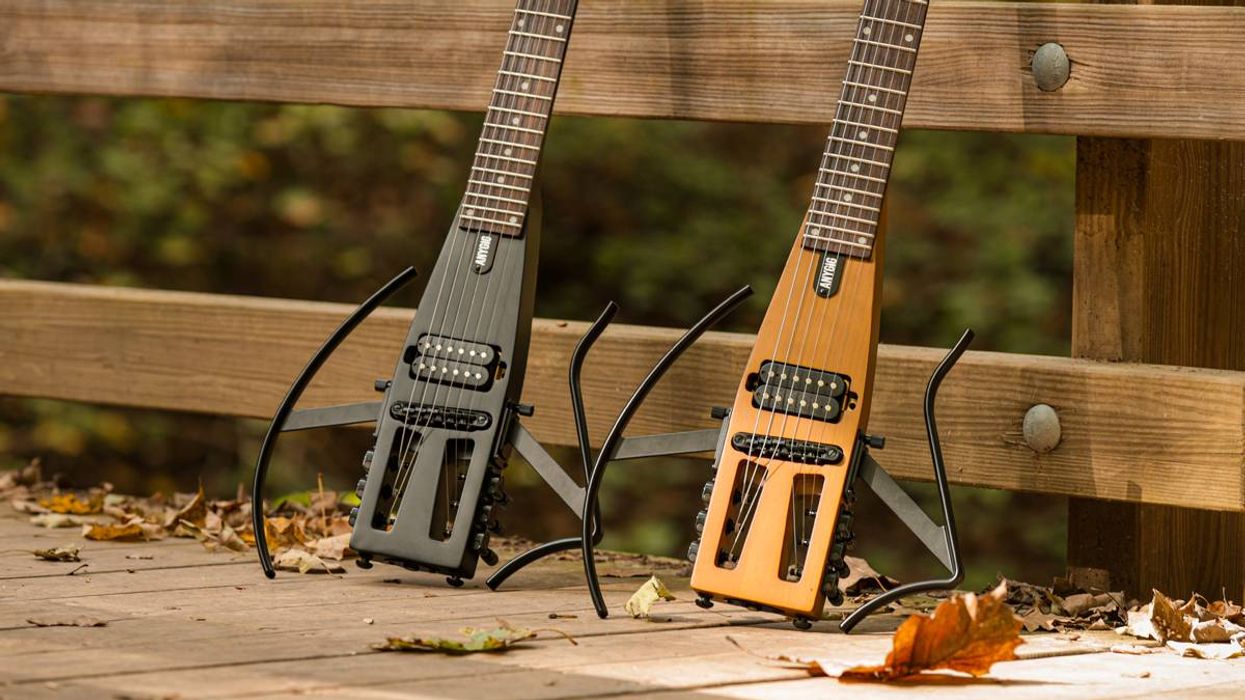Rather than writing about magnets and turns of wire, I thought I’d expose the “man behind the curtain” this month and write about guitar pickup marketing. I face a unique challenge. First of all, most guitars already come set up with decent pickups, and my job is to convince customers to change them. But second, and equally challenging, the swinging pendulum of fashion is always influencing what folks want. And believe it or not, it affects you and your guitar gear purchase decisions.
When Cathy Duncan hired me as head of marketing for Seymour Duncan, she told me, “Sell the steak and the sizzle.” The steak in this case is an electric guitar pickup. For customers to buy it, it has to perform as advertised and provide value for the money the customer paid for it. What makes selling image products like guitar pickups different from selling other consumer products like digital cameras and MP3 players—and maybe even different from selling other musical instruments like woodwind and brass—is that I’m required to sell something in addition to the product: I’m required to sell the dream. The sizzle.
The best way to sell the sizzle is by providing the customer with a great cut of steak, perfectly prepared. With the right piece of gear, you sound better and you play in new ways and with new tones that you never experienced before. The right gear drives inspiration. When that happens—when you’re inspired because of a piece of gear you just purchased—you’re truly living the dream.
Think about the guitar as a symbol. Nowadays it represents mainstream Americana. But a few decades ago it was a symbol of rebellion and counter-culture. That’s part of what makes it an image product. Many of us first picked up a guitar because of the image. If you’re like 96.5% of Premier Guitar readers, you’re a dude. And a good number of us dudes started playing guitar exactly six nanoseconds after we learned that girls like rock stars.
One way we sell the sizzle is by tapping into the rock star fantasy you’ve secretly harbored ever since you first played air guitar on a tennis racquet behind closed bedroom doors. Most gear companies have an artist relations rep who cultivates a mutually beneficial relationship with artists. An artist gets free or discounted gear and the company promotes the notion that you need to use a particular artist’s gear in order to cop their tone. Moreover, the rock star sizzle extends beyond gear and delves into the lifestyle fantasy. The not-so-subtle message is: “Use Slash’s pickup. Live Slash’s life.” Hey, it could happen.
Here’s where it gets really challenging for guys like me: popular music impacts gear choices, much in the same way it influences fashion. The late ‘60s gave birth to folk-rock, protest songs, bell bottom jeans, and the acoustic guitar pickup. The heavily processed sounds of the late ’70s saw us shelling out for leather pants along with refrigerator-sized racks full of preamps and active pickups. In the ’80s, dive bomb whammy excursions required double-locking vibratos, Trembuckers, and, dare I say it, Spandex. The outdoorsy-punk aesthetic of early ‘90s grunge made us ditch the Spandex for plaid flannel, stonewashed jeans, and a vintage guitar plugged into a few fuzzy stompboxes. Later in the ‘90s, in addition to full sleeve tattoos and aggressive facial piercings, new metal’s drop tunings caused amps to get dual rectified and guitars to sprout a seventh string.
When I started at Seymour Duncan, nearly every customer who called in wanted to sound like Stevie Ray Vaughan or Jimi Hendrix. In 1993, five of the top ten Seymour Duncan pickups were Strat replacements. Cut to now: the thicker tones of humbuckers rule the day. Folks who email us want to sound like Slash and Dimebag and Mick Thomson. At the moment, there’s only one Strat replacement pickup in the Seymour Duncan top ten. But guess what? It’ll swing back to single coils soon enough. That’s fashion, folks. And the cumulative result of fashion’s effect on gear is an amazing assortment of products. Today’s guitarist has more great gear to choose from than at any other point in history.
So now you know the truth. Not only am I in the musical instruments industry, I’m also in the fashion industry. As for you—whether you’re a vintage solidbody collector, a dreadnought bluegrass picker, or a down-tuned black metal screamer—the gear purchases you make are influenced by forces not too different from those that influence the haute couture collections of the big fashion houses. As for me, who knows? Maybe one day, with the right guitar and the right pickup, one of those tall, skinny, supermodels with the bored look on her face will go out with me.
Evan Skopp
Evan is head of Marketing and OEM Sales for Seymour Duncan, based in Santa Barbara, California. He serves on the board of directors of Musician’s Institute in Hollywood and is past-president of the Guitar and Accessories Marketing Association.









![Rig Rundown: AFI [2025]](https://www.premierguitar.com/media-library/youtube.jpg?id=62064741&width=1245&height=700&quality=70&coordinates=0%2C0%2C0%2C0)



